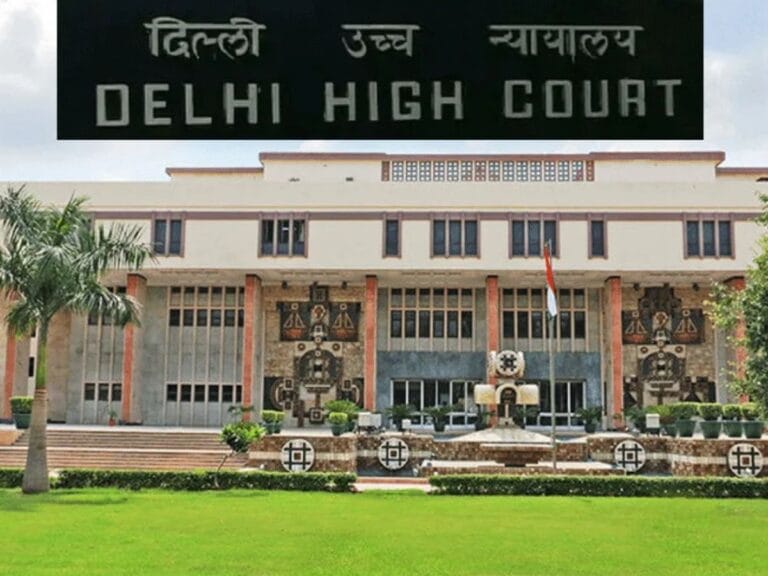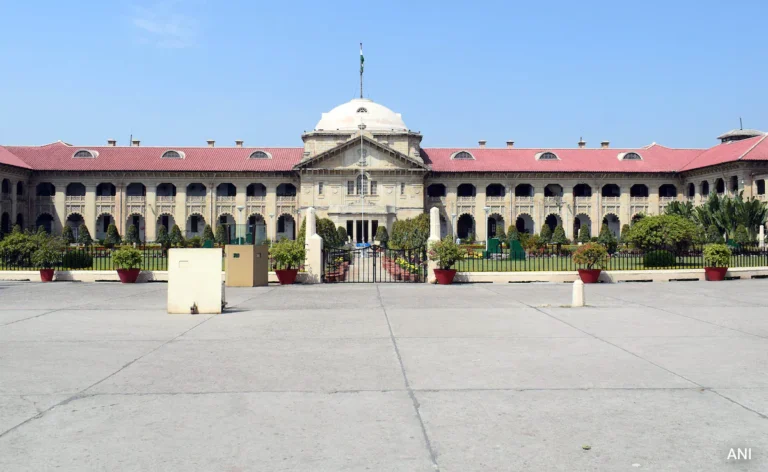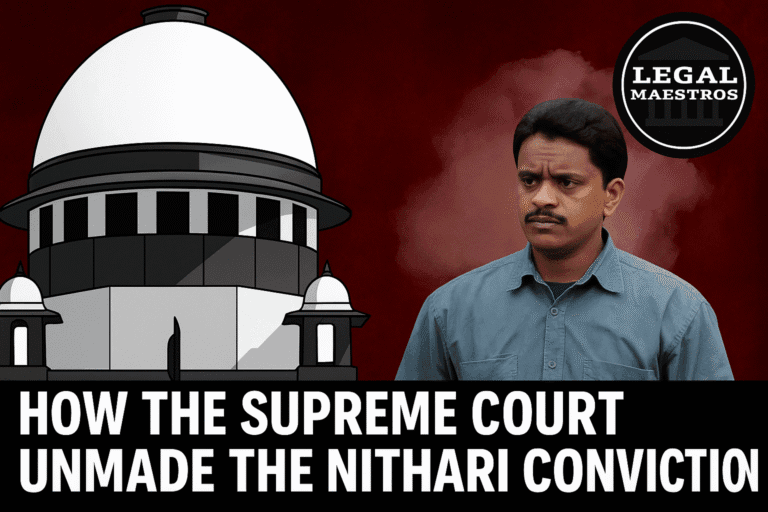
As the world becomes more and more governed by digital media, the problem of online piracy has become tenfold, and is one of the main threats to holders and creators of content globally. This is due to the ease with which information that is in the form of digital content can easily be reproduced and shared online without even going through due authorization. Which is why there is a need to have strong legal frameworks or the intervention of the courts which plays a proactive role in cases like this.
In the case of DAZN LIMITED & ORS. Vs. Buffsports.me & Ors., the Delhi High Court passed an important order on May 28, 2025, showing its efforts towards protecting intellectual property, which would prevent such illegal practices. This ruling is leading to an outstanding step in the war against online pirates of copyrighted material, especially in the sports sphere of live streaming of sporting events.
The case background for the rights of the plaintiffs:
This was an important case whose plaintiffs were DAZN Limited (incorporated in England and Wales in 2007) and DAZN Software Private Limited which has managed the India operations of the DAZN group since 2022. The DAZN Group is a world-famous streaming and entertainment service that offers access to live streams of sports and other on-demand media in more than 200 countries.
For any queries or to publish an article or post or advertisement on our platform, do call at +91 6377460764 or email us at contact@legalmaestros.com.
Their online streaming media, which is accessible through websites such as dazngroup.com and dazn.com/en-IN/home and the mobile applications, comes with superior video streaming technologies that bring together an enormous range of sports content, such as football, martial arts, tennis, and snooker.
More importantly, the plaintiffs had obtained exclusive media rights to the top FIFA Club World Cup in 2025. Such extensive rights that were acquired on May 19, 2025, included global broadcasting rights including in India, various media like television and digital delivery systems such as the internet and mobile technology among others as well as ancillary rights such as sub licensing.
The actual competition was to be held in the US of A between the 14th of June 2025 and the 13th of July 2025. The plaintiffs by virtue of Section 37 of the Copyright Act, 1957 were entitled to broadcast, re-broadcast, retransmit, stream and make available to a viewer or communicate to the public the content related to this event.
For any queries or to publish an article or post or advertisement on our platform, do call at +91 6377460764 or email us at contact@legalmaestros.com.
Rogue Sites and Internet Piracy: The Challenge
The opening of the legal proceeding was related to the finding on May 17, 2025, that several rogue sites, namely the defendants 1 through 6 (including buffsports.me, sporthd.me, piratemedia.me, vipbox.lc, strimsy.top, and vipstand.pm) were or had been illegally re-streaming DAZN content.
All this had been done without the permission or a license of the plaintiffs in televising other events that had already been decided on and on events like series a which were still continuing. Findings showed that these defendant websites were not only streaming independent broadcasts but were having direct access to the exclusive broadcasts of DAZN and were actually stealing the broadcasts by bypassing its advanced streaming systems. This illegal streaming enabled these pirated groups to enrich themselves financially through broadcasting materials to which they did not have any rights.
It poses a serious challenge because of the very nature of the internet, which is lacking in geographical lines and is highly challenging to implement effective enforcement mechanisms. The plaintiffs wisely positioned a wide range of defendants in order to respond to this broad problem.
For any queries or to publish an article or post or advertisement on our platform, do call at +91 6377460764 or email us at contact@legalmaestros.com.
The direct rogue websites themselves did not only include this, but so did their respective Domain Name Registrars (DNRS), who were defendants 7 to 11. Moreover, the plaintiffs have identified the providers of infrastructure as a significant element by impleading a number of Internet Service Providers (ISPs) as defendants 12 to 20, who are a gateway through which these offending sites are accessed.
Such defendants as the Department of Telecommunications (DoT) and the Ministry of Electronics and Information Technology (MEITY) were also involved as defendants 21 and 22, respectively, because the aforementioned maintain a significant contribution to the ability to control Internet access. Finally, in order to address proactively the future emergence of threats, it was possible to implead unknown defendants in the form of John Doe or defendant 23.
Common law theories and statements Basic
The basis of the suit filed by the plaintiffs was the need to grant a permanent injunction to prevent the defendants, on the one hand, and the defendants, on the other, from enjoying exclusive and broadcasting rights, and pray for an award of accounts and damages. Some interim applications were made as well to rake in a fast hearing of the matter.
For any queries or to publish an article or post or advertisement on our platform, do call at +91 6377460764 or email us at contact@legalmaestros.com.
One of the important cases had applied for exemption from pre-institution mediation under Section 12A of the Commercial Courts Act, 2015, AND UNDER SECTION 151 of the Code of civil procedure, 1908 (CPC).
Also, considering the urgency of applying for an ex parte by interim injunction and quoting the Honorable Supreme Court Yamini Manohar v. T.K.D. Krithi and the Delhi High Court Chandra Kishore Chaurasia v. R.A. Perfumery Works Private Limited, the court has allowed this exemption as there is a pressing need for an intervention from the court.
One other application was to file further documents under Order XI Rule 1(4) read with Section 151 CPC and this was also granted with the liberty to the plaintiffs to file further documents as the proceedings progressed.
For any queries or to publish an article or post or advertisement on our platform, do call at +91 6377460764 or email us at contact@legalmaestros.com.
This is in addition that an exemption to service in advance to some of the defendants (numbers 13, 16, 21 and 22) was also granted under Section 151 CPC dependent on the reasons detailed and in the best interest of justice.
The main arguments of the plaintiff were replaced by the fact that they are the legal proprietors of the intellectual property rights both to their original works as well as the exclusive broadcasting rights that were licensed to them.
Their arguments were that such encroachments by defendants were in totality unauthorized and were bound to cause irreplaceable damage and harm unless stopped forthwith. Plaintiffs stressed that these rogue websites were being run by so-called masked players who were misusing modern technology to destroy their anonymity and make money off the exploitation of a treasure of other people’s by unlawful infringement of their rights to protected works.
For any queries or to publish an article or post or advertisement on our platform, do call at +91 6377460764 or email us at contact@legalmaestros.com.
The Court held that it shall grant dynamic injunctions.
Upon the hearing of the submissions and also reading of the documents, the Delhi High Court determined that the plaintiffs had satisfactorily proved a prima facie case against the defendants of infringing their rights of copyright.
The court was keen on noting the time-sensitive nature of the case as it termed it as a classic case of copyright infringement by masked players who use technology to shamelessly misuse and commercially reap the benefits of the copyrighted works by legitimate owners of rights.
The court noted that these entities are on a teary pace sprouting and it needs to be stopped forthwith since when not done, it will tremendously compromise the legal rights of the parties such as the plaintiffs.
For any queries or to publish an article or post or advertisement on our platform, do call at +91 6377460764 or email us at contact@legalmaestros.com.
The balance of convenience was a firm fender in approval of giving relief to the plaintiffs and the court had decided that without ex parte an interim injunction the plaintiffs would surely suffer irrecuperable loss and injury.
Concept of Dynamic Thinking in Injunction
An important part of the decision of the court was the award of a dynamic injunction. It has come to be known over the past few years that this type of injunctive relief is an incredibly effective way that courts have taken to combat the immensely changing environment of online rights violators. As compared to the traditional injunction whereby only a single known infringing entity is targeted, the introduction of a dynamic+ injunction enables the rights holder to notify intermediaries (such as the ISPs and DNRs) of emerging mirror, redirect and alphanumeric accessions to already blocked infringing domains so that they can be blocked in real-time without having to go to court each time a new infringing entity or variation is identified.
In its judgment, the court mentioned the identical reliefs given by other courts quite explicitly. It referred to the case of Applause Entertainment Private Limited v. Meta Platforms Inc. & Ors., which attracted unlawful streaming of audio-visual excerpts of web-series and provided real-aid properly in the form of a so-called, dynamic injunction.
For any queries or to publish an article or post or advertisement on our platform, do call at +91 6377460764 or email us at contact@legalmaestros.com.
The other precedent of a Co-ordinated Bench of Delhi High Court in Universal City Studios LLC v. There should also be effective injunctions of this kind which were included in Dotmovies.baby.
The need for this kind of dynamic relief here was increased by the nature of the event: such a level club game as the FIFA Club World Cup. The court was aware of the fact that any time lag in preventing such rogue websites would imply enormous and irreparable harm and loss to plaintiffs who directly had their intellectual property rights violated.
The court, therefore, allowed the plaintiffs at the time as well as after the event was over, to inform the involved DNRs or ISPs of the information about any new found infringing domain names (mirror/redirect/alphanumeric variations). When such an indication comes forth, the ISPs and DNRs have been instructed to block the said domain names and initiate the actions on a real-time basis.
For any queries or to publish an article or post or advertisement on our platform, do call at +91 6377460764 or email us at contact@legalmaestros.com.
Possible implications for intellectual property enforcement
The decision of the Delhi High Court was in DAZN Limited & Anr. Vs. Buffsports.me & Ors. It goes the extra mile in enhancing the legal ammunition that intellectual property rights owners in this jurisdiction already possess.
The adoption and use of the dynamic injunction has shown the court to be of a dynamic and practical nature when it comes to addressing the difficulties that piracy of online content can bring. This decision once again affirms that the judicial system is eager to adjust a historic legal redress to the changeable nature of the internet so that justice cannot be passed over by technological changes.
The ruling explicitly laid the burden on ISPs and DNRs to assist in the real-time blocking approach and it seems to underline their important position as gatekeepers of access to the internet. This type of enforcement mechanism can be done most effectively through the coordinated efforts of law enforcement, under the guidance of judicial directives to counter the ever-increasing spread of pirated content.
For any queries or to publish an article or post or advertisement on our platform, do call at +91 6377460764 or email us at contact@legalmaestros.com.
Although it is still problematic to identify and go after all the nameless infringing parties, the dynamic injunction allows an effective and flexible tool that is capable of evolving, thus giving copyright and broadcasting rights widespread protection by covering the newly emerging infringing websites, as well.
The case of DAZN Limited & Anr. Vs. Buffsports.me & Ors. By the High Court of Delhi is a land mark claiming and knighting the safeguarding of intellectual property in the digitalized era. In granting a dynamic injunction, the court has indeed given a strong and adaptable tool to counter the unrelenting impact of online piracy especially to live events that have great commercial prospects and that there are minimal broadcasting periods.
With this verdict, Indian judiciary sends a categorical signal to the illegal streaming fraternity that it is ready to take strong and dynamic steps to safeguard the rights of legitimate content creators and distributors, to make the digital content scenario more safe and balanced.
For any queries or to publish an article or post or advertisement on our platform, do call at +91 6377460764 or email us at contact@legalmaestros.com.






![Research Assistantship @ Sahibnoor Singh Sindhu, [Remote; Stipend of Rs. 7.5k; Dec 2025 & Jan 2026]: Apply by Nov 14, 2025!](https://legalmaestros.com/wp-content/uploads/2025/11/Gemini_Generated_Image_s0k4u6s0k4u6s0k4-768x707.png)
![Karanjawala & Co Hiring Freshers for Legal Counsel [Immediate Joining; Full Time Position in Delhi]: Apply Now!](https://legalmaestros.com/wp-content/uploads/2025/11/Gemini_Generated_Image_52f8mg52f8mg52f8-768x711.png)